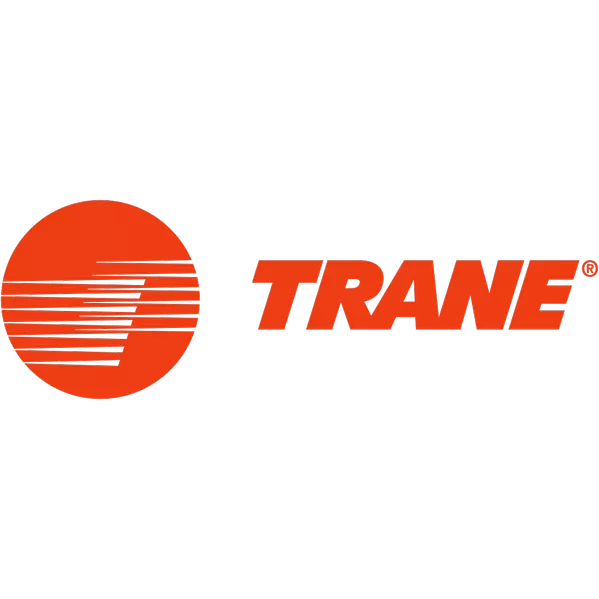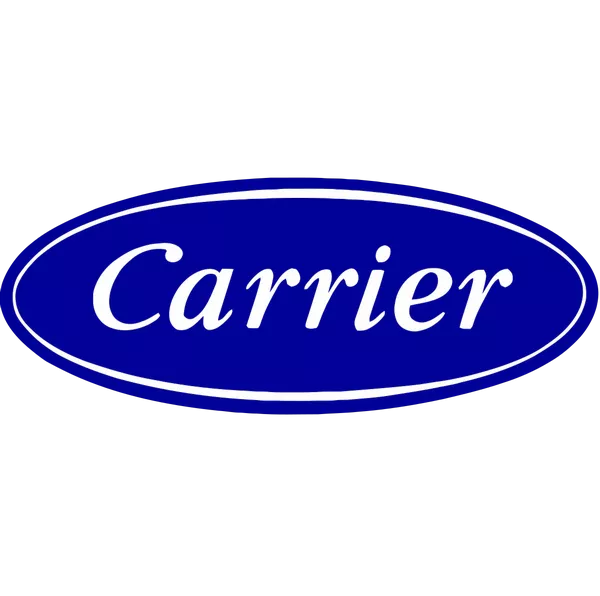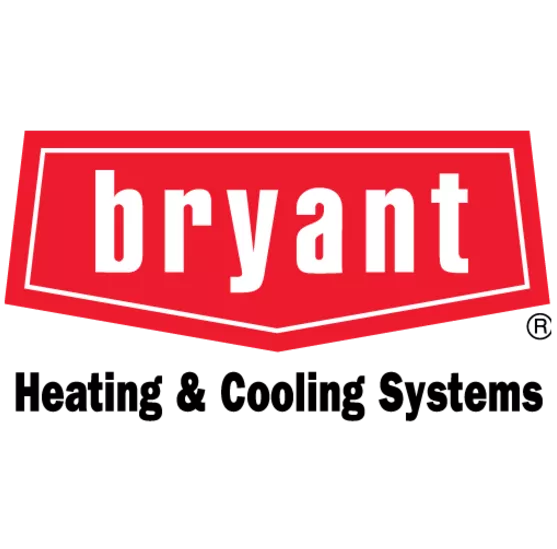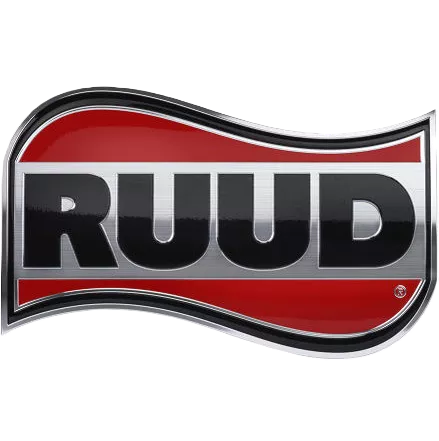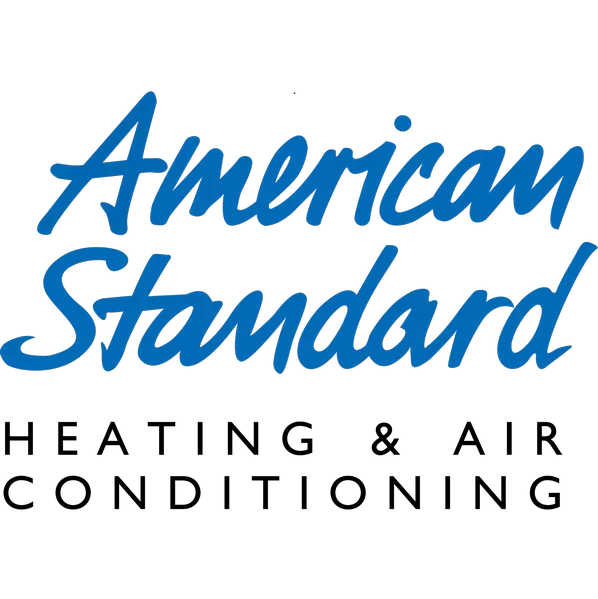Trane: This lineup is engineered to behave like one coordinated machine once it is commissioned correctly. For this comparison the stack is the XV20i variable-speed central AC, the S9V2-VS variable-speed gas furnace, and the XV20i variable-speed heat pump. The judgments below reflect how that trio performs together as a matched communicating set in 2 to 4 ton homes with less-than-perfect ductwork.
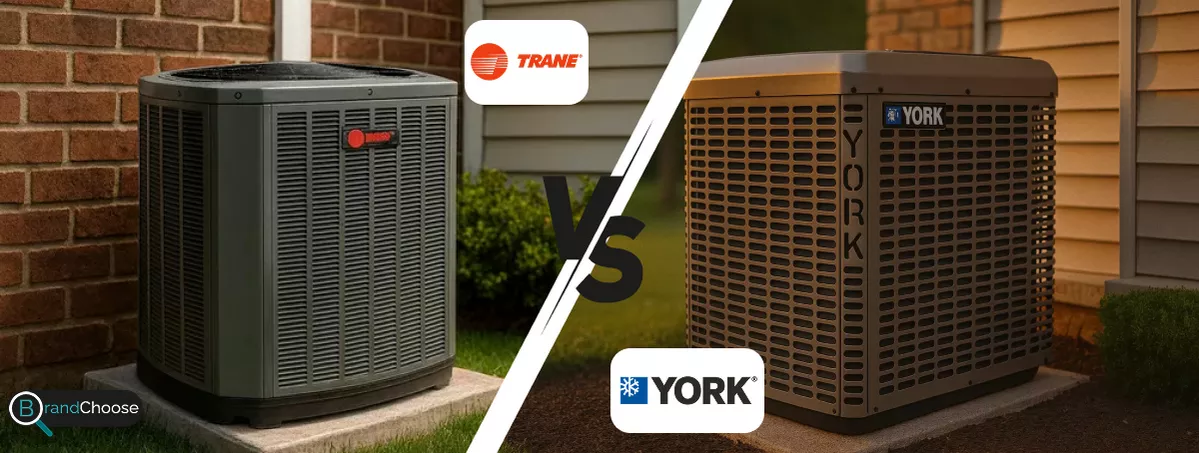
York: The flagship tier aims for refined acoustics and strong part-load control while keeping day-to-day ownership straightforward. Here we use the Affinity YXV variable-capacity central AC, the Affinity YP9C modulating gas furnace, and the Affinity YZV variable-capacity heat pump. Everything below evaluates how that trio behaves when installed as a documented, communicating system.
Product Selection
| Primary Use Case | Trane | York | ||
| Air Conditioner | XV20i |  |
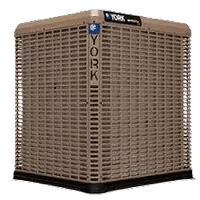 |
YXV |
| Gas Furnace | S9V2-VS | 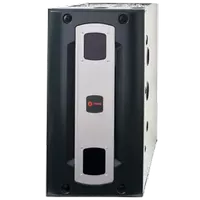 |
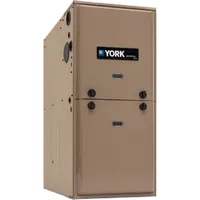 |
YP9C |
| Heat Pump | XV20i |  |
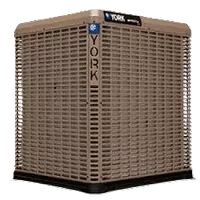 |
YZV |
🟦 Trane: The tree is easy for pros to map, with XV at the top and XL/XR as step-downs, but the real advantage lives in the pairing tables. Approved indoor coils and air handlers give installers several airflow targets to choose from, which helps hit design cfm even when returns are undersized. The XV20i + S9V2-VS + XV20i HP combination scales cleanly across common tonnages, and the communicating control keeps modulation behavior and humidity strategies intact if capacity changes later.
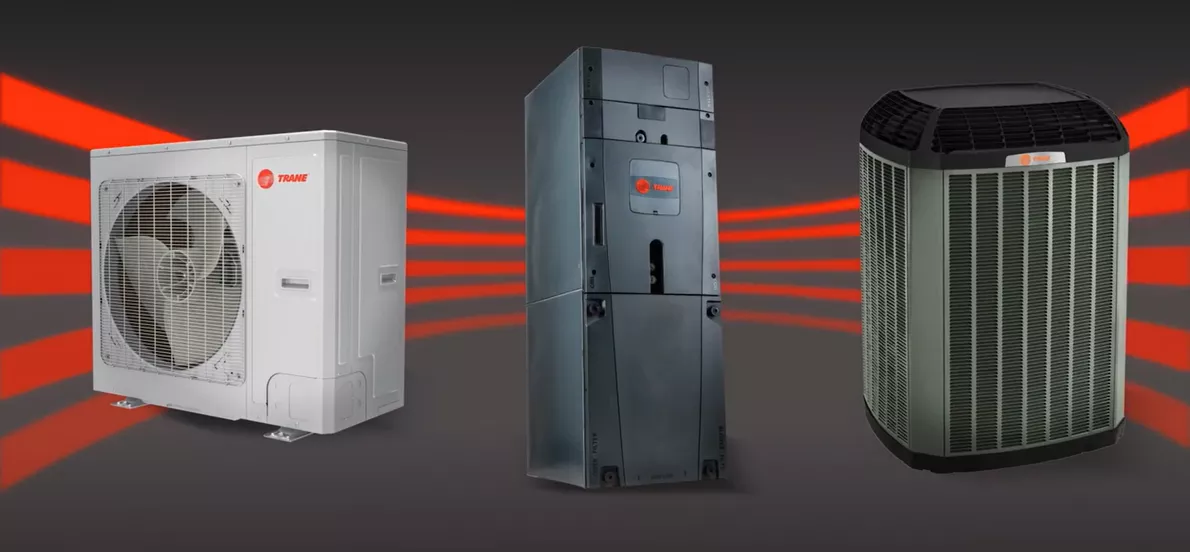
🟪 York: The portfolio is arranged in clear rungs, with Affinity at the top above LX lines. The YXV + YP9C + YZV grouping is the obvious top step for buyers chasing quiet ramps and tight comfort control. Matched-system charts link outdoor units, indoor coils or the modulating furnace, and the communicating thermostat, so features and published ratings survive coil swaps and size changes without guesswork.
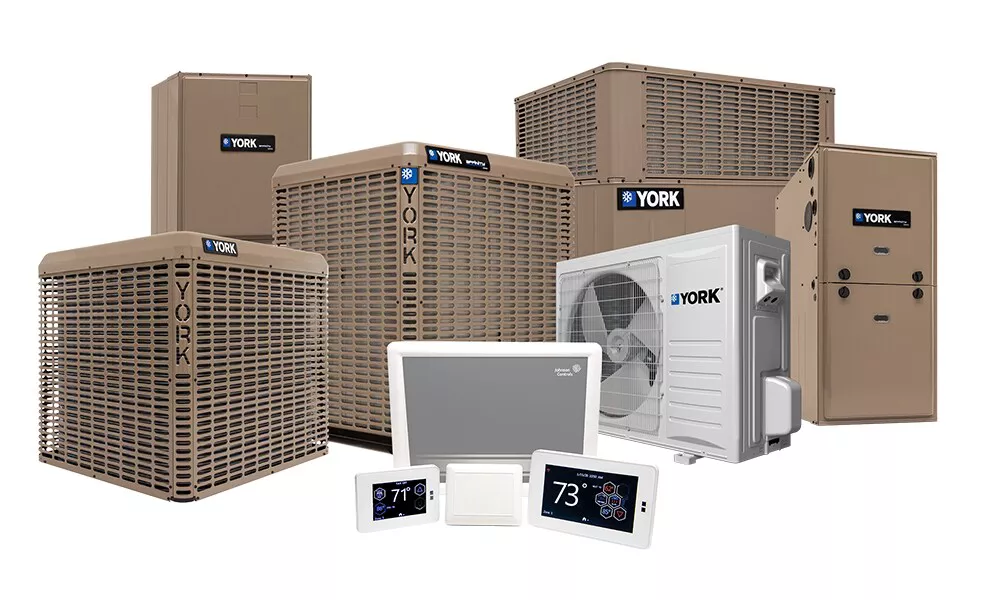
✅ Verdict: Trane offers deeper coil and blower granularity that helps tune tricky ducts, while York gives shoppers a tidy premium leap that is simple to spec and scale.
Customer Support & Warranty
🟦 Trane: Registration delivers 10-year parts on premium equipment and strong heat-exchanger terms for the furnace. Owners mostly feel the uniform processes and stocking depth. Distributors typically have common boards, sensors, and ECM motors on the shelf (ECM is an electronically commutated motor that modulates speed precisely), and the communicating thermostat preserves equipment IDs and event logs after swaps. In July, that tends to mean one visit and a decisive repair.
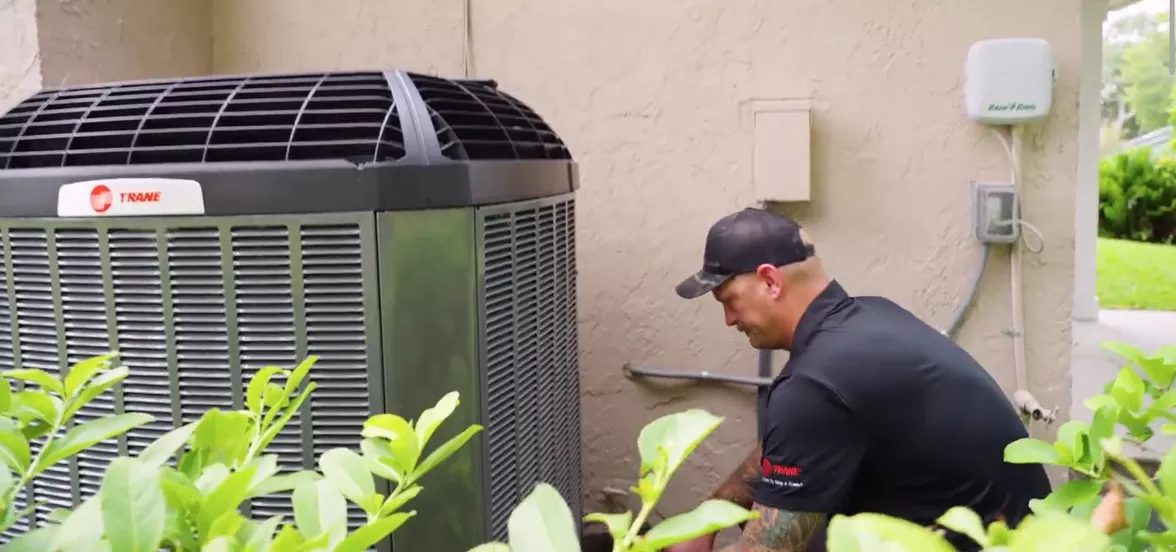
🟪 York: Registration likewise brings 10-year parts and robust exchanger coverage at the flagship tier. Support quality tracks the local Echelon or York dealer footprint, but documentation for approved coil and control pairings is clear, which helps retain variable-capacity behavior after service. In markets with strong stocking, turnaround is brisk and repeat visits are rare.

✅ Verdict: Trane feels more uniform coast to coast, while York performs smoothly where the Affinity dealer network and wholesaler shelves are strong.
Energy Efficiency
🟦 Trane: Both XV20i units live in the premium SEER2 bracket (SEER2 is today’s seasonal cooling-efficiency test), and the S9V2-VS furnace operates in the high-90s AFUE band (AFUE is gas furnace fuel-to-heat efficiency). Real savings show up at partial load. The inverter compressor and variable-speed blower stretch cycles at low power, trimming on off losses while keeping temperature and indoor humidity steady. With sealed ducts and charge verified by superheat and subcool readings (superheat and subcool are temperature checks that confirm the refrigerant is boiling and condensing in the right places), double-digit seasonal reductions versus 12 to 14 SEER legacy systems are routine.

🟪 York: The YXV/YZV pair targets upper-tier SEER2/HSPF2 results (HSPF2 is the seasonal heating efficiency metric for heat pumps), and the YP9C pushes AFUE toward the practical ceiling while coordinating gentle airflow ramps. At low speed the platform keeps coil temperature and fan cfm aligned to the load, so dehumidification does not require dropping the setpoint. In right-sized homes with airflow near 350 to 400 cfm per ton (target airflow per ton of cooling) and a verified charge, the headline numbers translate into repeatable bill cuts through muggy shoulder seasons.

✅ Verdict: Trane is the conservative pick for efficiency that repeats predictably across climates, while York delivers essentially the same real-home outcome when airflow and charge are dialed in.
Smart Features & Connectivity
🟦 Trane: This is a true communicating thermostat ecosystem, meaning the wall control and equipment share live data so modulation targets comfort rather than simple on off. The control coordinates compressor speed, blower cfm, and coil temperature, supports zoning, and records detailed fault histories that point technicians to causes instead of symptoms. Staying inside the ecosystem preserves staged airflow during humidity pulls and clean dual-fuel logic.
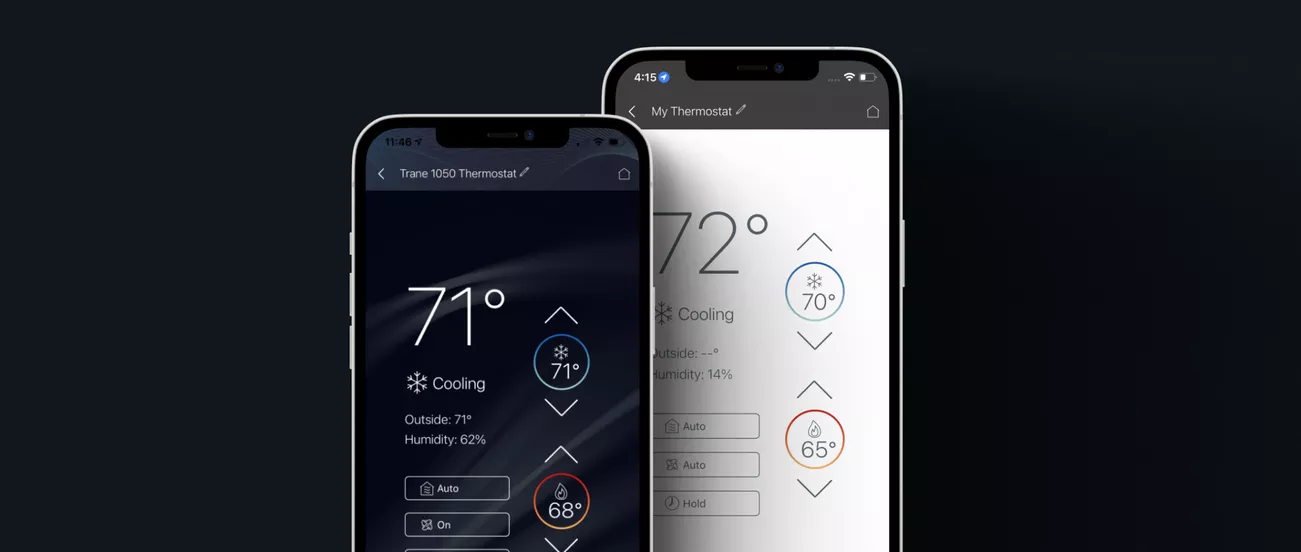
🟪 York: The Affinity control stack offers communicating operation with zoning, humidity targets, app access, and diagnostics that expose coil and fan behavior clearly. Accessory integration is treated as part of the system, not bolt-ons, so comfort logic remains intact after IAQ upgrades. The interface favors clarity, which keeps day-to-day use low effort while still unlocking variable-capacity benefits.

✅ Verdict: Trane leans into deep diagnostics under one umbrella, while York matches the core functions with a straightforward interface that homeowners grasp quickly.
Noise Level
🟦 Trane: Low-load operation is the default here, so the XV20i condenser and S9V2-VS blower spend long stretches at modest rpm. The top-discharge fan throws air upward, which reduces reflections off siding in tight setbacks, and compressor isolators keep cabinet vibration from telegraphing into the pad. Outdoor loudness is published in dB (decibels, a logarithmic sound unit), but what matters in a yard is avoiding sudden speed jumps. Indoors, calm hinges on keeping external static pressure in bounds (external static is duct resistance measured in inches of water column); when returns are generous and filter racks are sealed, ramps feel nearly invisible and the registers settle into a soft, even exhale.
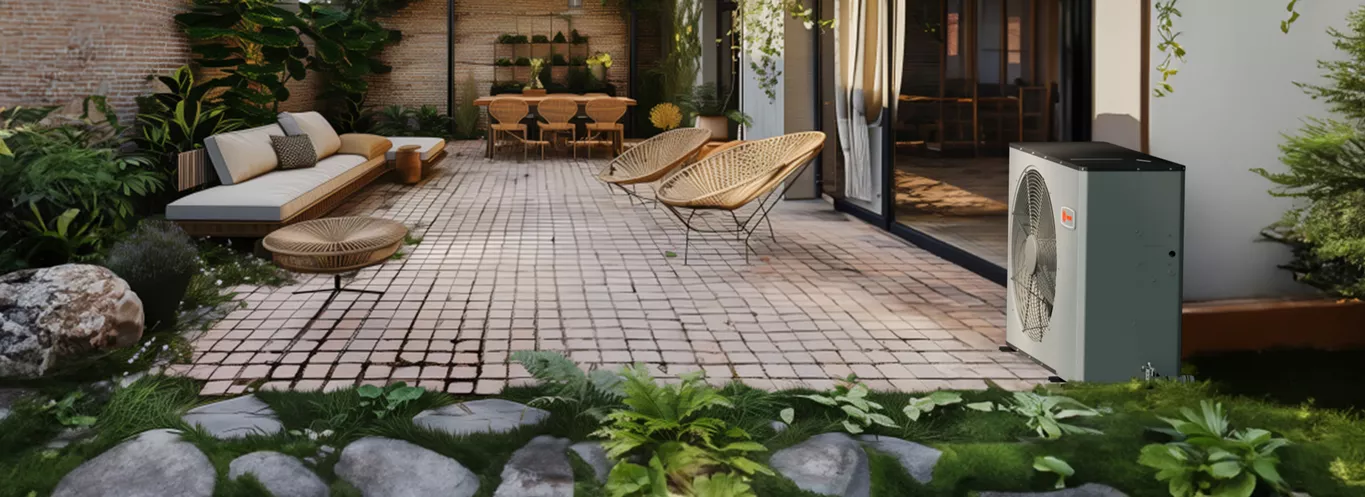
🟪 York: The Affinity YXV and YZV are tuned for low-tonality sound at partial capacity, with dense cabinets and a fan geometry that buries the higher notes that carry across fences. The YP9C modulating furnace coordinates tiny blower steps so older trunks do not drum when airflow changes. Install craft still sets the ceiling: a level pad, a short flex section to decouple line-set vibration, and proper condenser clearance keep the outdoor note in the background while maintaining smooth indoor ramps.
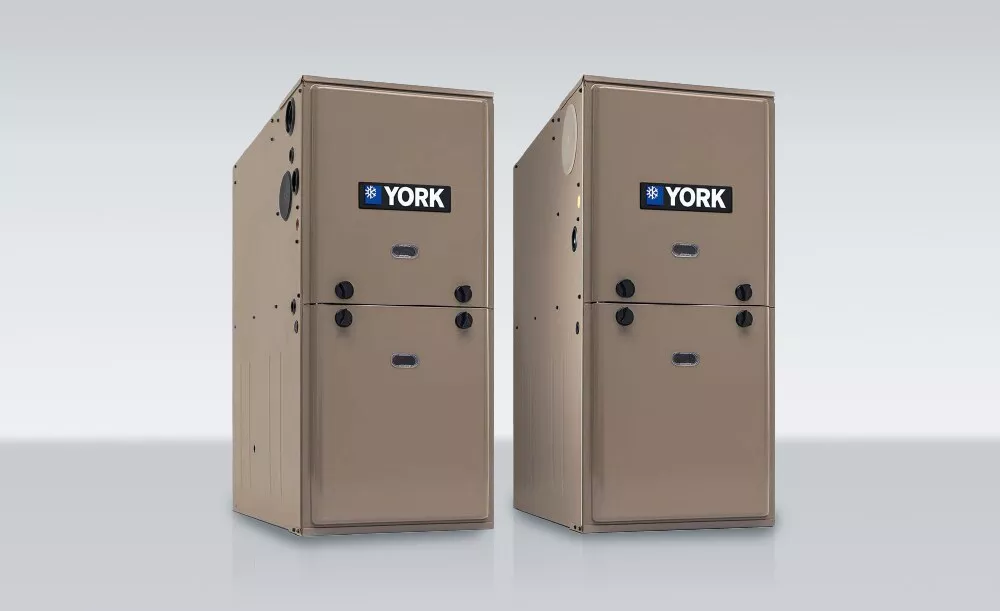
✅ Verdict: Trane is typically the quieter pick in tight side yards thanks to top discharge and very gentle indoor ramps, while York is impressively hushed across long low-speed runs when duct static is already under control.
Cost & Affordability
🟦 Trane: Premium variable capacity commands premium installed pricing. Common 3-ton installed ranges with standard labor and no duct overhaul: AC only XV20i 11,500–20,000 USD, furnace only S9V2-VS 6,000–9,500 USD, heat pump only XV20i 12,500–22,000 USD. A matched AC + furnace bundle typically lands 15,500–29,000 USD, and dual-fuel builds often 17,500–33,000 USD. Electrical upgrades, crane time, or static-correction duct work add 10–25 percent; rebates and off-season promos tug the other way.
🟪 York: Quotes usually track a notch lower like for like. Typical 3-ton figures: AC only YXV 10,500–18,500 USD, furnace only YP9C 5,500–9,500 USD, heat pump only YZV 12,000–20,500 USD. A matched AC + furnace is commonly 15,000–28,000 USD, and dual-fuel about 17,000–31,000 USD. Spreads are driven more by accessories, zoning, and any duct remediation than by the badge on the cabinet.

✅ Verdict: Trane tends to sit near the top of the premium bracket for its ecosystem polish, while York usually lands the friendlier quote at the same comfort tier.
Reliability & Durability
🟦 Trane: Rigid outdoor cabinets and debris-shedding coil geometry help keep condensing temperatures civilized in heat waves. The control strategy favors long, low-stress cycles, and a uniform parts pipeline means boards, sensors, and ECM modules (ECM is an electronically commutated motor that modulates speed precisely) are usually close at hand in season. Longevity still depends on fundamentals: charge verified by superheat and subcool readings (temperature checks confirming the refrigerant is boiling and condensing where it should), airflow near 350–400 cfm per ton (target airflow per ton of cooling), and clean coils that actually move heat.

🟪 York: Affinity hardware is stout, with coated steel panels and aluminum indoor coils that sidestep formicary corrosion risk over time (formicary corrosion is microscopic copper pitting from household organics). Documentation for approved coil and control pairings keeps variable-capacity behavior intact after a repair, and wholesalers stock the usual boards and ECM motors to keep downtime reasonable. As with any premium stack, outcomes rise or fall on commissioning discipline, not just the nameplate.

✅ Verdict: Trane earns the practical nod on coast-to-coast parts consistency and repeatable processes, while York matches well when installs are by the book and local stocking is strong.
Cooling Performance
🟦 Trane: Comfort is built around stretching cycles at low power so the evaporator lives in a productive temperature band for both sensible and latent load (sensible is temperature change, latent is moisture removal). When indoor humidity creeps up, the control trims cfm per ton to keep the coil colder longer, peeling off moisture without overshooting the thermostat. In a right-sized home that yields a stable supply-air delta-T across the coil (delta-T is return-to-supply temperature drop) and indoor RH hovering in the mid-40 to near-50 percent band through muggy stretches, with distant rooms drifting less because air keeps moving continuously instead of in bursts.

🟪 York: Deep low-speed turndown keeps coil temperature and airflow aligned to the load so SHR stays balanced (SHR, sensible heat ratio, is the share of total cooling that goes to temperature rather than moisture). Longer, quieter runs push air gently into far branches and avoid the cool-but-clammy feel that short cycling creates. With a matched indoor coil, a correctly set TXV (a thermostatic expansion valve that meters refrigerant to keep the coil in range), and a weighed-in charge, the result is steady temperature and confident dehumidification without chasing lower setpoints.

✅ Verdict: Trane is excellent at dehumidify-on-demand control that holds RH tight without chilling rooms, while York delivers nearly identical field comfort when airflow and charge are dialed in.
Heating Performance
🟦 Trane: Winter comfort leans on the S9V2-VS running long on low fire with a variable-speed ECM blower (electronically commutated motor that adjusts speed precisely) so supply air rises smoothly and stays steady. The XV20i heat pump carries shoulder-season load at low rpm, and demand defrost coordinates with gentle blower ramps to avoid cool drafts after a clear. In dual fuel, the communicating control pivots at a programmed balance point so the handoff from electric to gas is quiet and timed to real weather.
🟪 York: The YP9C is a fully modulating furnace that trims fuel in fine increments, pairing that with soft blower changes so rooms warm in small, continuous steps rather than jumps. The YZV heat pump holds meaningful capacity at low speed in cool weather, and the communicating control keeps recovery after defrost composed. Dual-fuel logic is straightforward, letting electric heat ride mild days and gas take over only when it is the better economic or comfort choice.

✅ Verdict: Very even, Trane low-drama heat with especially tidy dual-fuel behavior and stable airflow across long cycles. For York, more granular burner modulation gives this stack an ultra-smooth indoor feel, especially in long overnight runs.
Indoor Air-Quality Enhancements
🟦 Trane: Filtration, humidity and ventilation are treated as a single plan under the communicating thermostat. High-MERV media cabinets drop in cleanly (MERV rates how small a particle a filter can capture), whole-home humidifiers and dehumidifiers coordinate with blower targets, and balanced fresh air is handled with ERV/HRV modules (ERV/HRV bring in outdoor air while exchanging heat or moisture). During muggy spells the controller trims cfm per ton so the evaporator runs slightly colder, lifting latent moisture without overcooling rooms, and IAQ runtime is logged for smarter tune-ups.
🟪 York: Affinity integrates media filtration, UV or electronic cleaners, humidification and ERV/HRV ventilation with profiles that protect blower limits and preserve quiet low-speed operation. Because accessories are treated as matched components, the comfort logic survives upgrades and external static pressure stays within blower specs (external static pressure is duct resistance, measured in inches of water column). The result is clean, dry air without needing to chase lower setpoints.

✅ Verdict: For Trane, one-roof orchestration delivers tight humidity control and consistent airflow when IAQ accessories are added. York is a balanced IAQ toolkit that stays stable after add-ons, with a strong emphasis on keeping pressures and noise in check.
Installation & Serviceability
🟦 Trane: Premium results start with Manual J load, Manual S selection and Manual D duct design, then get verified on site. Commissioning targets include 350 to 400 cfm per ton, total external static at or below equipment ratings, nitrogen pressure testing, deep evacuation, and charge set by superheat and subcool readings (superheat and subcool confirm the refrigerant is boiling and condensing in the right places). The communicating control exposes coil, compressor and blower data plus event logs, so techs can confirm coil delta-T quickly (delta-T is return-to-supply temperature drop) and fix causes instead of symptoms.

🟪 York: The same discipline applies, with clear matched-set charts that lock in coil and thermostat pairings so variable behavior remains intact after repairs. Access to boards, coils and blowers is direct, diagnostics surface the airflow and temperature points that matter, and a properly set TXV (thermostatic expansion valve that meters refrigerant to keep the coil in range) simplifies charge verification. In markets with strong Affinity stocking, turnaround is brisk.
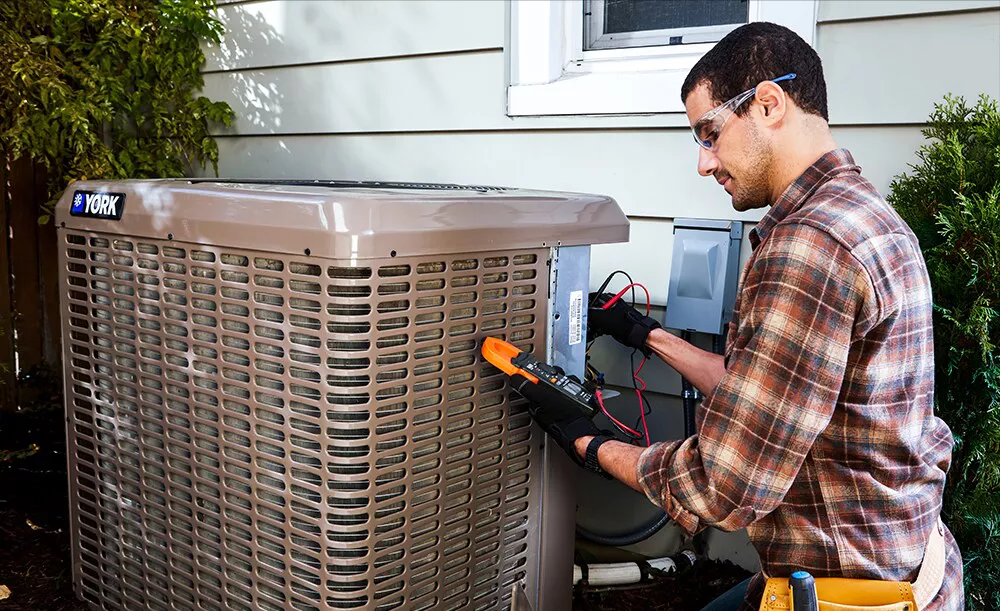
✅ Verdict: For Trane, rich diagnostics and uniform parts pipelines make peak-season calls decisive when the commissioning checklist is followed. For York, Straightforward access and solid documentation keep service efficient, provided local distributor shelves carry the common boards and ECM modules.
Quick Buyer Match Guide
🟦🟦 Choose Trane if you
Straightforward access and solid documentation keep service efficient, provided local distributor shelves carry the common boards and ECM modules.
🟪🟪 Choose York if you
You want ultra-smooth modulating gas heat, a calm acoustic profile at low speed, and a premium control stack that stays simple to live with after IAQ upgrades.
Conclusion
Both lineups deliver true premium comfort with quiet part-load operation, modern diagnostics and confident humidity control. Trane leans into an end-to-end ducted ecosystem that is easy to commission repeatably and particularly polished in dual-fuel climates. York counters with finer gas modulation and a very composed low-speed feel while keeping IAQ additions stable and quiet. If you prioritize a one-brain system with coast-to-coast service uniformity, pick Trane. If you want the smoothest furnace modulation and a straightforward interface that remains calm after upgrades, York is an excellent fit.

